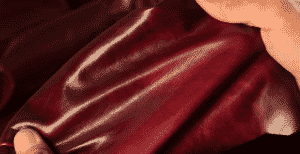How many times in buying a bag, a wallet or a belt we wanted to evaluate the quality of the leather? How to recognize it then?
It is essential to learn to distinguish the product that is worth from the poor quality to avoid being cheated and to make sure we get a beautiful accessory that lasts over time. For this aim, here are seven practical tips, which we hope will come in handy in your choice “leather good”.
- The eye wants its part
Observe and examine the product well before buying it. It seems a banality, but first of all that item or object must visually convince you, it must be in your style and taste. Then the other senses will come into play, which will help you to distinguish the quality of the leather and make the right choice.
- Let the nose be your guide
Do you have a good sense of smell? A leather belt or bag has a very peculiar, enveloping and acrid smell; already only the smell is almost a “brand” of originality, very different from all other materials. For the bags we usually use hides of animal origin (especially of bovine), which are subjected to tanning with chemicals to stop the natural decomposition and ensure the preservation of the skin. In the case of eco-leather, the origin is always animal, but natural substances are used to tan the skin, with a reduced environmental impact.

- Touch for believe
Take the object in your hands, gently rub the leather, try to pull it and bend it to evaluate its consistency. Let your fingertips guide you. The real leather is soft and malleable and resists well to wear; you can rub and pull, but the shape will not be affected.
- Look at the seams
If the seams are made by hand they will be more resistant and durable – and the product may cost more, of course, because the operation took longer – and from an aesthetic point of view the effect is nicer than the seams made by machine. It is also important that a quality thread has been used to sew the cuts: the most used are linen threads, more flexible than nylon ones.
- Even the cut has its importance
The leather should be cut following the direction of the grain, to ensure more flexibility to the object and to avoid that over time accumulate wrinkles or creases aesthetically unpleasant.
- Beware of the edges
To prevent moisture from getting better and penetrating inside, the edges must be burnished correctly, and it is an attention that good artisans usually do not fail to give.
- Finally, the label
The “real leather” brand should be printed or glued on the object, to attest the quality of the product: “100% real leather”. At this point, it’s up to you: good choice!




